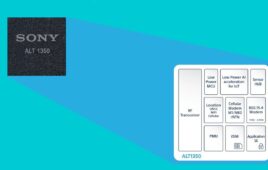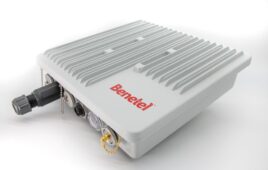SAN FRANCISCO (AP) — Pretty much any cell phone you’d buy today comes with a digital camera, but only a few are good enough to take the place of even a cheap point-and-shoot.
It can be tricky to sniff out which phones really fall into that category. Highly advertised features, like a mass of megapixels and multiple settings, do not always add up to a solid camera. But after testing five devices from different manufacturers and wireless carriers, I can suggest some that prove it is indeed possible to get a good cell phone that also takes crystal-clear photos.
My favorite of the bunch is the 8-megapixel Samsung Memoir, which packs an impressive set of camera and phone functions into a slick package.
The Memoir ($200 from T-Mobile with a two-year contract and mail-in rebate, but available for $50 from Amazon.com with a contract) sports a crisp touch screen that is helpful for accessing the camera’s numerous features. Those include mosaic and panorama shooting modes, as well as a feature that can warn you when one of your photo subjects blinked in a picture.
Taking photos is simple with the dedicated capture and zoom buttons on one side. The Memoir’s flash can handle darker scenes fairly well, too.
The Memoir’s built-in editing options let you crop photos, adjust colors or white balance, insert various effects and more. If you forgot to take a certain shot in black and white, no problem — you can adjust it after the fact.
The Memoir has its weak points. It snaps photos slower than another contender I tried, the Palm Pre. And like most of the phones I tested, it lacks optical zoom, which gives more detailed images and lets you shoot from farther away. The Memoir uses a digital “zoom” that simply crops and magnifies what you see on the screen to give the appearance of moving in closer.
I often felt the touch screen wasn’t that responsive, or at least wasn’t doing what I expected it would when I tapped it. It would have been nice if the phone came with more storage space than just a 1 gigabyte memory card, too.
Here’s a look at some other cameraphones:
___
Palm Pre: The Pre ($200 with a two-year Sprint Nextel contract and mail-in rebate) is a strong smartphone, and on closer inspection I learned it also has a great, simple camera.
The Pre’s 3-megapixel camera is frill-free: Its only real feature is the ability to turn its flash on or off or put it on auto.
But what the Pre shoots, it shoots well. The handset had the least amount of shutter lag of any cameraphone I tried, and did a good job of adjusting the brightness of shots in different lighting situations. It generally produced sharp, color-rich photos.
___
Casio Exilim: The Casio Exilim ($280 with a two-year Verizon Wireless contract and online rebate) was the ugly duckling of the bunch — a colleague compared it to a five-year-old Japanese cell phone — and the most difficult to use.
Styled like a thick clamshell, the Exilim’s main screen flips around 180 degrees so it can lie flat and mimic a regular camera’s LCD screen. Unfortunately, the tiny 2.3-inch screen must then be navigated with little buttons on the handset’s side. This was often confusing and tedious.
One of the Exilim’s few redeeming qualities: It was the only one I tried with optical zoom rather than digital zoom.
Another neat feature is its water-resistant body, which I tested by dunking the phone in a pitcher of water. Indeed, it still managed to take photos, though they came out a bit distorted.
I was able to take crisp photos, but I didn’t think they were as bright as on some of the other handsets. Regardless, I quickly ran out of room for them on the phone, since there is very little internal memory and it does not come with a memory card. (It has a microSD slot if you want to supply your own).
___
Nokia N97: The only unlocked (which means it is not tied to just one wireless service) phone I tested, the Nokia N97 crams a great digital camera and mess of features into a fairly chunky but still pocketable package. Because it’s not subsidized by a wireless carrier, it’s pricey: $699 through Nokia’s online store, or $599 through Amazon.com.
The N97, which has a big, bright touch screen and easy-to-use slide-out qwerty keyboard on its side, sports a 5-megapixel Carl Zeiss lens on the back and extremely bright dual LED flash.
The camera took great shots in bright and low light, and I had fun playing with the different settings, which range from simple color filters to light sensitivity and image sharpness options.
The digital zoom wasn’t that impressive, as it seemed to blur photos. There is plenty of space to store the photos you do like, though, as the phone includes 32 gigabytes of internal memory. There’s also a microSD memory card slot for adding more.
If money is no object and you’re looking for a handset that can do a bit of everything, this may be the one.
___
Sony Ericsson C905a: With its 8-megapixel camera and pretty low price, the silver Sony Ericsson C905a ($180 from AT&T with a two-year contract and mail-in rebate or $50 from Amazon.com with a contract) is a fair option.
The handset is thick but compact, with a slide-out keypad on the bottom. There’s no touch screen on the C905a, but there are plenty of buttons to help you along: Dedicated “scenes” and “shoot mode” buttons let you fine-tune the light settings and types of shots (you can take panoramas, for example, or add a frame around your pictures).
The C905a’s 16x digital zoom was more helpful than I expected, and it seemed to work more fluidly and produce less blurry images than some other handsets. I was very impressed with the clarity of some photos I took, though the colors could have been a bit brighter.
If you like to snap shots quickly, the C905a may annoy you, though, as it doesn’t have the quickest response time.
___
See the pictures Rachel Metz took with cameraphones at http://www.flickr.com/photos/rachelmetz.




